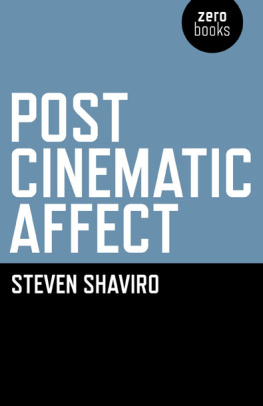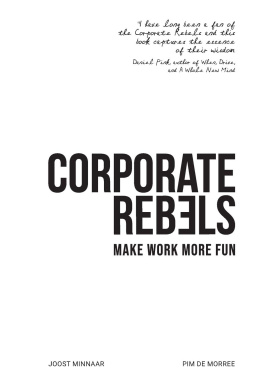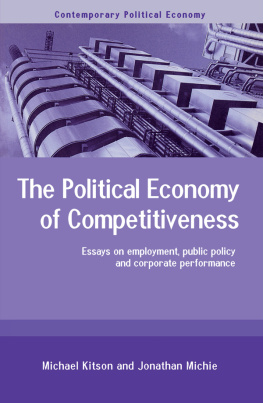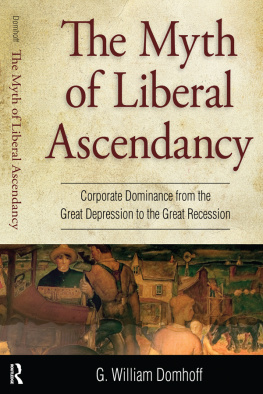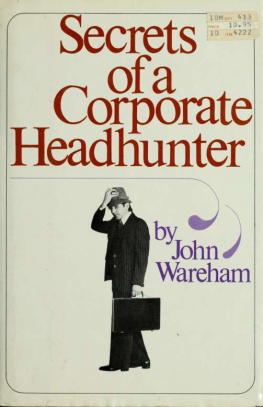Acknowledgments
I am grateful to Yoram Margalioth and two anonymous reviewers for their comments on an early draft of the manuscript.
About the Author
Daniel N. Shaviro is the Wayne Perry Professor of Taxation at New York University Law School. Before teaching law, he spent three years in private practice at Caplin & Drysdale, a leading tax specialty firm, and three years as a legislation attorney at the Joint Congressional Committee on Taxation, where he worked extensively on the Tax Reform Act of 1986. In 1987, Shaviro began his teaching career at the University of Chicago Law School, and he moved to New York University in 1995. Shaviros scholarly work examines tax policy, budget policy, and entitlements issues. His previous books include Taxes, Spending, and the U.S. Governments March toward Bankruptcy (2006), Who Should Pay for Medicare? (2004), Making Sense of Social Security Reform (2000), When Rules Change: An Economic and Political Analysis of Transition Relief and Retroactivity (2000), and Do Deficits Matter? (1997).
BOARD OF TRUSTEES
Joel L. Fleishman, Chairman
Robert M. Solow, Vice Chairman
Robert D. Reischauer, President
Afsaneh Beschloss
Rebecca Blank
Jamie S. Gorelick
Richard C. Green Jr.
Fernando A. Guerra
Freeman A. Hrabowski III
Charles L. Mee Jr.
Mary John Miller
Melvin L. Oliver
Louis A. Simpson
Jeremy Travis
Judy Woodruff
Why Have a Corporate Tax?
B efore asking why we have a corporate tax, one must define what the corporate tax is. The term can be defined narrowly or broadly. On the narrow side of the spectrum, it might mean only the tax levied directly on corporations. Broadening the definition a bit, it might additionally refer to the taxation of those owning financial interests in corporations, such as stock or debt. One can further expand the term to include anything distinctive in the tax treatment of anyone engaged in transactions with corporationsfor example, corporate employees who receive compensation.
Only the broadest definition does justice to the tax systems impact on people and activities in or near the corporate sector of the economy. Look at one piece without the others, and it is easy to draw myopic and inaccurate conclusions about the overall landscape. At the same time, however, each separate piece has its own particular logic. This chapter, therefore, first describes the overall system, then addresses the rationales for the different components, and finally addresses the rationales for how the components presently interact with each other to create at least theoretical double taxation of corporate income.
The Components of the U.S. Corporate Tax System
Corporations, as defined for U.S. federal income-tax purposes, are legal entities that either (1) are literally incorporated under the law of a U.S. state (or under any foreign equivalent of U.S. corporate law), (2) have ownership interests that are publicly traded,
The tax rate on U.S. corporations starts low (15 percent on the first $50,000 of annual income and 25 percent on the next $25,000) but then rises to 34 percent and finally peaks (for income above $10 million) at 35 percent. While the tax rates for individuals escalate at much lower income levels than they do for corporations, 35 percent is also the top rate for individuals, under law that is currently scheduled to remain on the books through 2010. After 2010, when tax cuts enacted during the presidency of George W. Bush will expire unless Congress passes a new law extending them, the top rate for individuals is scheduled to revert to its pre-2001 level of 39.6 percent.
Historically, the top marginal tax rate for corporations has usually been below that for individuals, and at times substantially below. This informally adjusts for the fact that corporate income may end up being taxed a second time when it is distributed to shareholders (as discussed below). A further tax disadvantage of incorporating a business, however, is that if the corporation has losses, its owners will not be able to deduct them against their other income, as might otherwise have been possible. Moreover, even if C corporation status is tax advantageous in the current year, its long-term desirability depends on the subsequent tax treatment of the companys owners.
Before turning to the owner level, several further aspects of the corporate-level tax are worth describing briefly. For the most part, corporations and individuals use the same or similar rules in computing taxable income and tax liability. The aforementioned subchapter C, however, contains a host of special rules related to the corporate life cyclethat is, incorporation, various corporate acquisitions of new assets or other companies, asset distributions to shareholders, and liquidation. Often, these rules permit the avoidance of current tax consequences, even when assets are changing hands in what the system might otherwise deem a taxable sale or exchange, so long as assets are moving into corporate solution from the noncorporate world, or else are moving around sufficiently innocuously within corporate solution, as in certain cases where one corporation acquires or disgorges another. When assets move out of corporate solution, however, there typically is a tax of some kind on the recipients, and possibly on the corporation as well. Subchapter C is so complicated that it takes up many well-paid tax lawyers entire careers, and makes it a rule of ordinary prudence that no major corporate deal should ever take place without tax lawyers sitting in the room.
This brings us to the tax treatment of payments by a corporation to the holders of financial claims against it, such as a right to repayment of cash advances or to a share of corporate profits. Although many different instruments that create financial claims against a corporation have their own distinctive rulesfor example, options and notional principal contractsa fundamental tax divide exists between instruments classified as debt and those classified as equity.
Debt (or a bond) is conceptualized as creating an arms-length relationship between the corporation and a third-party provider of capital (the bondholder or lender) that requires compensation. Consistent with this view, interest on debt is generally deductible by the corporation (subject to various interest disallowance rules that respond to suspected tax-planning opportunities) in addition to being generally includable in income by the recipient.
By contrast, equity (or stock) is conceptualized as giving the holder an inside or ownership interest in the corporation, rather than the interest of a third party that is negotiated at arms length. Accordingly, dividend payments to the shareholder are thought of as something that the corporation wants to do, rather than as an outlay demanded by a third-party provider of capital. Dividend payments accordingly have always been nondeductible. From the standpoint of the shareholder, however, they are deemed income, suggesting that they should be taxable.
If dividends are nondeductible but includable and earnings are distributed to shareholders, equity-financed corporate income ends up being doubly taxed. Thus, suppose that both the corporate and shareholder rates (including for dividends received) are 35 percent. A corporation that earns $100 will retain $65 after tax. Once this money is distributed to shareholders as a dividend, the shareholder will retain only $42.25 after tax. By contrast, the shareholder could have kept $65 after tax by either (1) not doing business through a corporate entity or (2) using debt financing, thus permitting the corporation to distribute $100 as deductible interest and eliminate the corporate-level liability.


